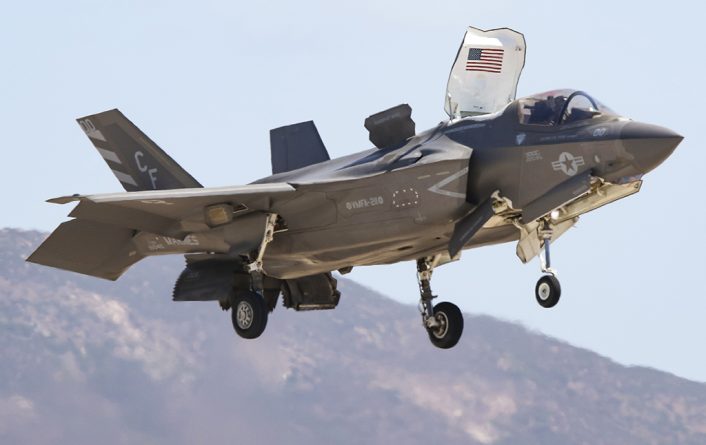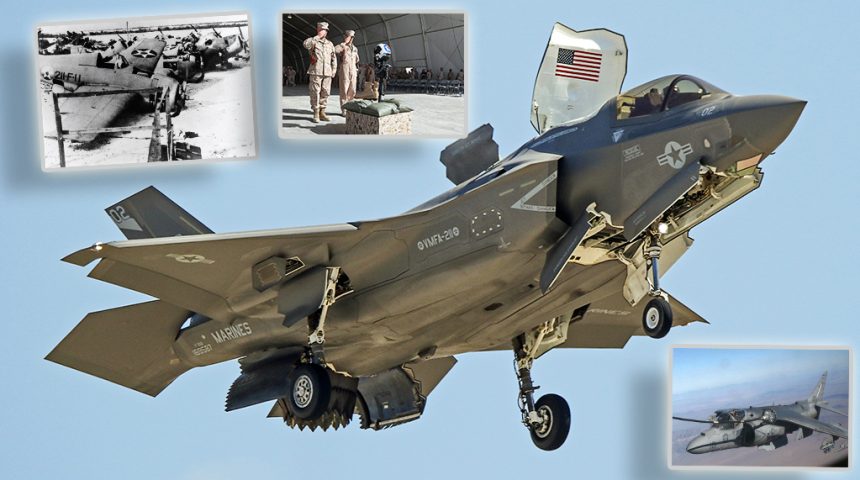First U.S. Unit To Use F-35 In Combat Continues Legacy of Famous WWII Squadron.
This past week I had the privilege of spending time with the men of Marine Fighter Attack Squadron 211 (VMFA-211), the historic “Wake Island Avengers”, also known today as the, “Bastion Defenders”. They earned both names the hard way. Seldom have I been in the presence of such heroism and history, and the story of VMFA-211 is worth knowing.
During my visit, I got a detailed look at their new Lockheed F-35B Lightning II Joint Strike Fighters, the first F-35s used in combat by the United States. As remarkable as these new aircraft are, this is not a story about airplanes, it is a story about heroism and legacy. Both run deep in VMFA-211.
You can trace the lineage of VMFA-211 back to 1931. They were simply “VMF-211” then. The history is a little fuzzy, but so was the much of the lineage of U.S. Marine aviation then. The force was evolving quickly.
One noteworthy pilot to pass through their ranks in the early years was Greg “Pappy” Boyington. Boyington helped set the mold for the hard-drinking, rule-breaking fighter pilot of WWII Marine fighter squadrons. His exploits were sensationalized in the TV series “Baa-Baa Black Sheep” in the late 1970’s. He also shot down a staggering 28 enemy aircraft in total in World War II, was shot down himself, won the Medal of Honor, the Navy Cross and the Purple Heart.
But Boyington’s early history is not the story of VMF-211 and the modern VMFA-211. It is only a very small part of how their roots took hold nearly a century ago.
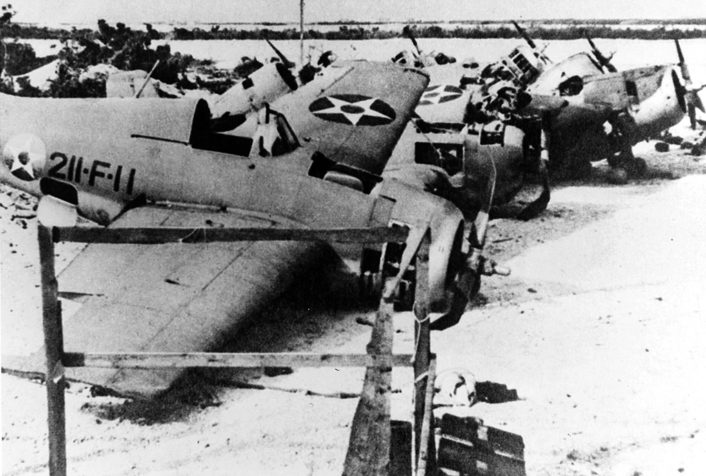
VMF-211 had the misfortune of being stationed on Wake Island in December of 1941. Wake Island seemed like fine duty for young aviators and their support crews, a tropical island with lilting breezes surrounded by the massive, blue Pacific expanse. But Wake was also a tripwire, and that’s why the Marines of VMF-211 were there. Across those crystalline waters blew a “Divine Wind” of conquest and tyranny. The week of December 7, 1941, that wind became a typhoon that slammed full force into Wake Island and another sleepy island where a base named Pearl Harbor was located. That day would, “Live… in infamy”.
VMF-211 was caught on the ground during the Japanese attack on Wake Island the day after Pearl Harbor. War had just been declared, and they were among the very first to join the battle that would span a hemisphere, last half a decade, and end in the only operational use of nuclear weapons in history.
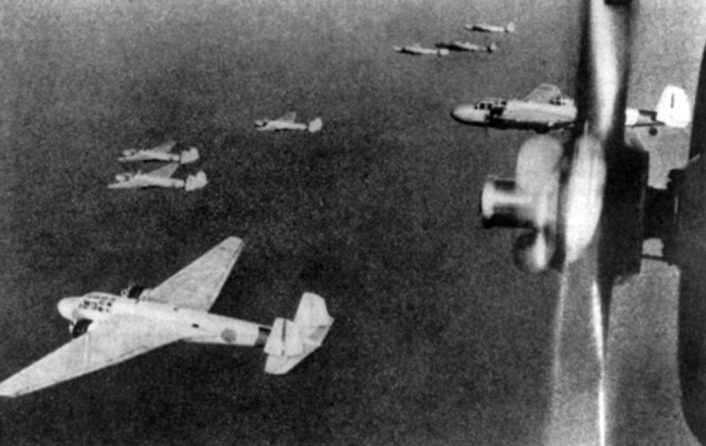
In the days after December 7, 1941, VMF-211 was on their own, marooned on this tropical island, more than half of their fighter aircraft already destroyed by the Japanese. They faced a lopsided battle with a force of vastly superior numbers. But battle they did. VMF-211 lost seven of its twelve aircraft on the first day of fighting, before they ever got off the ground. Only five aircraft remained. They were sturdy, barrel-shaped Grumman F4F-3 Wildcats, an aircraft never known for its beauty.
Major Paul A. Putnam was the commander of VMF-211 then. Putnam was an early founder of America’s “Greatest Generation”, a humble class of working men who followed orders, valued American ideals and led by example. The example Paul A. Putnam set would help him rise to Brigadier General and help his men survive three and half years in the abysmal hell of a Japanese prison camp.
With their five remaining Grumman Wildcats, Putnam and VMF-211 waged a miniature campaign against the Japanese that defined asymmetrical warfare at its best. They somehow managed to sink four Japanese ships, the first Japanese ships sunk by the U.S. in WWII. These five remaining Wildcats and their Marine pilots went on to shoot down a staggering eight Japanese aircraft. Five Marine pilots in five remaining Wildcats; four Jap ships sent to the bottom, eight Jap planes splashed.
Eventually the numbers shifted against them and the waves of Japanese aircraft prevailed. The last of VMF-211’s Wildcats was shot down or destroyed on the ground.
Undaunted, and because, “every Marine is first and foremost a rifleman”, Putnam’s remaining Marine airmen picked up rifles and organized a ground defense of Wake Island against the impending storm of a Divine Wind invasion. Within a few days of December 23, 1941, Wake Island began to fall to the Japanese as they landed the first of their scouts on the island. But in the nearly three weeks since it was first attacked, the small detachment of VMF-211’s surviving men and aircraft waged a valiant defense that earned the unit the name that sticks to this day, the “Wake Island Avengers”. According to author and Wake Island historian Robert J. Cressman, “Wake’s defense in 1941 had been one of the few bright spots during the first months of war in the Pacific. It provided Americans a stirring example of heroism.”
Today, on one day of each week, the men of (now) VMFA-211, the “Wake Island Avengers”, wear special patches commemorating the heroic WWII history of their unit. But Wake Island wasn’t the last place that VMFA-211 proved their valor.
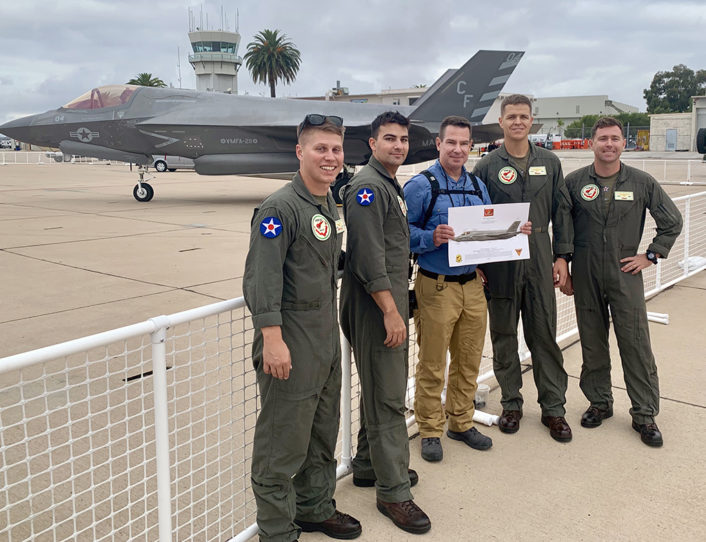
From late 2001, following the 9/11 terror attacks, until September 2012, eleven long years, VMFA-211 deployed two times each for Operation Enduring Freedom and Operation Iraqi Freedom. The unit was flying the AV-8B Harrier II STOVL (Short Take Off Vertical Landing) attack aircraft.
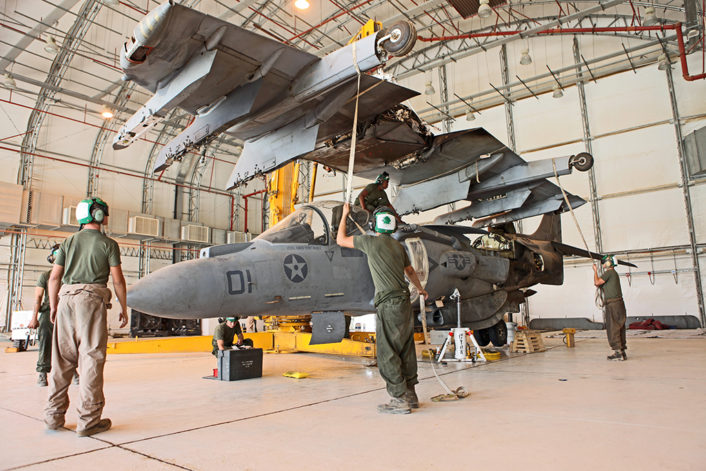
On the night of September 14, 2012, Lt. Col Chris “Otis” Raible was commanding VMFA-211. The unit and their AV-8B Harrier II STOVL attack aircraft were deployed to Camp Bastion in Afghanistan.
This was almost the end of Lt. Col. Raible’s combat deployment in Afghanistan. Unbeknownst to U.S. defenders, fifteen Taliban insurgents had obtained U.S. military uniforms and used the disguises to infiltrate Camp Bastion. Their objectives were to assassinate British Prince Harry, Duke of Sussex, who was then an AH-64 Apache pilot who was stationed there as a member of 662 Squadron, 3 regiment, Army Air Corps, and to destroy the aircraft of VMFA-211 at Camp Bastion.
VMFA-211’s Commander, Lt. Col. Raible, was on his way back from a late dinner at the post DFAC (Dining Facility) after flying a combat mission in his AV-1B Harrier II earlier that day. At about 10:00 PM local time, the base erupted with explosions from suicide vests, rocket-propelled grenades and machine gun fire.
Lt. Col. Raible had his sidearm and his training as a Marine to respond, and respond he did, with the typical determination of a “Wake Island Avenger”. Raible ran toward the gunfire and explosions, rallying a group of Marine aircraft maintainers to join him in the counterattack. The fifteen disguised insurgents had split into two groups, one large group targeting the Marines’ AV-8B Harrier II aircraft, the other group attempting to kill as many Marines as they could while they slept.
Lt. Col. Raible ran 100-yards across open ground under insurgent fire, rallying a group of aircraft maintenance personnel to counter attack the insurgent suicide bombers. Armed only with his sidearm, Lt. Col. Raible’s aggressive action temporarily halted the Taliban insurgent attack and enabled Marines to organize an effective counterattack that lasted over four hours. Lt. Col. Raible’s counterattack eventually stopped the infiltrating insurgents, but only after insurgent suicide bombers had destroyed six USMC AV-8B Harrier IIs. Tragically, Lt. Col. Chris Raible and fellow Marine, Sgt. Bradley Atwell, were killed during their counter-offensive. It was the greatest loss of U.S. Marine aircraft since the Vietnam War.
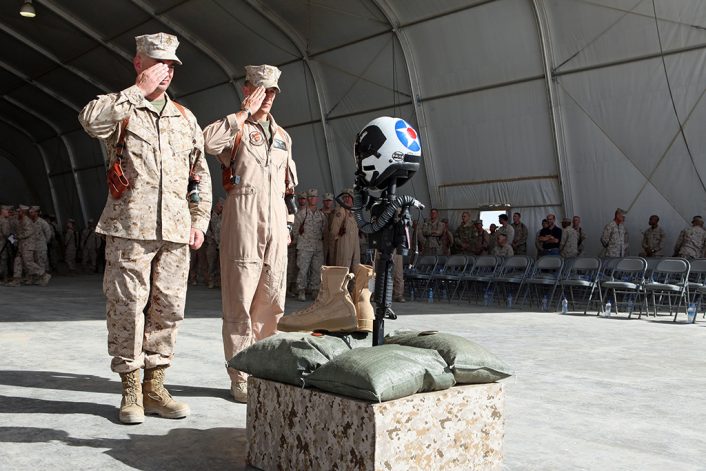
The loss for VMFA-211 and the entire Marine Corps was significant. Late military analyst and subject matter expert, technical consultant to author Tom Clancy, Mr. John Gresham, characterized the insurgent attack on Camp Bastion as, “the worst loss of U.S. airpower in a single incident since the Vietnam War”.
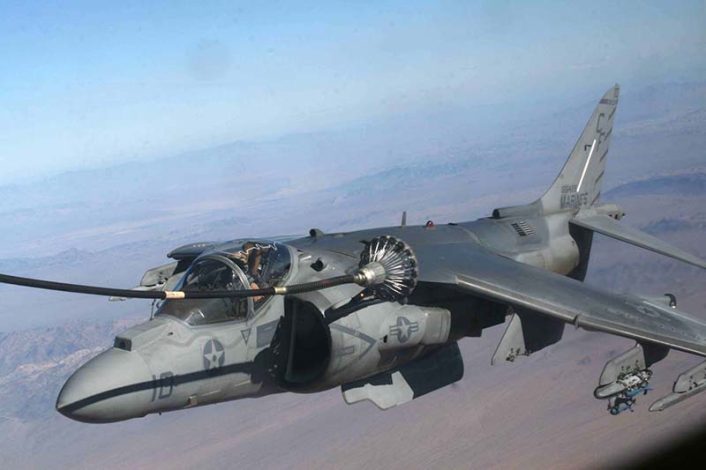
However, VMFA-211 would continue to retain their legacy as “Avengers”, only this time it would not be for the WWII Japanese attack on Wake Island.
Six years later, on September 27, 2018, the Marines of VMFA-211 would avenge the deaths of Lt. Col. Chris Raible and Sgt. Bradley Atwell. From the deck of the Wasp-class amphibious assault ship USS Essex (LHD-2) they launched the first-ever F-35 Joint Strike Fighter combat mission flown by the United States, and one of the first ever flown in the history of the F-35.
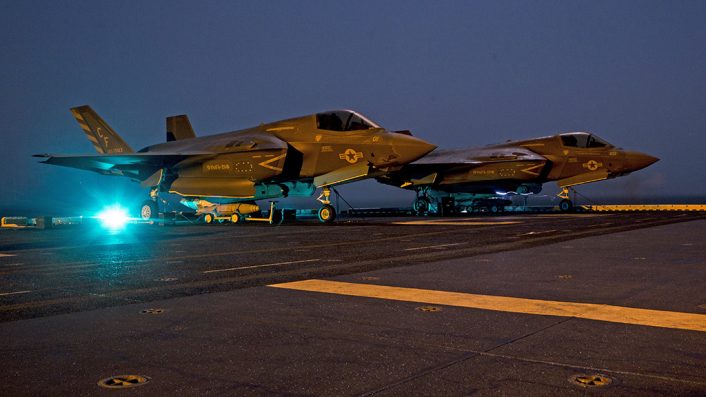
Wake Island Avenger F-35Bs hit targets in Afghanistan’s Khandahar province. During the strike, one of the aircraft shown participating had the name of Lt. Col. Chris “Otis” Raible stenciled on the right-side canopy rail in his honor.
The new “Bastion Defenders” of VMFA-211 have not only continued the legacy of the original VMF-211 “Wake Island Avengers”, but have built on their history with the expansion of F-35B operations and the integration of the new platform with all Marine Corps assets. They have proven and re-proven the Marine Corps penchant for gallantry in battle, and honored the history of Marines who came before them while building a more capable force for the Marines of tomorrow. While VMFA-211’s story is the story of only one unit in a very large Marine Corps, it is a story that demonstrates the valor, legacy and forward-thinking capabilities of the ever-evolving U.S. Marine Corps.
